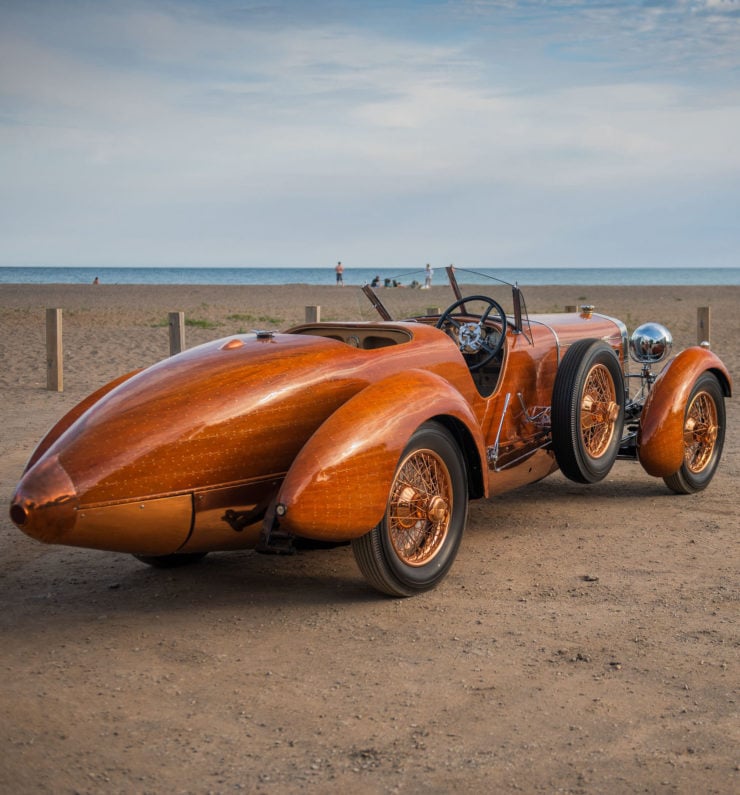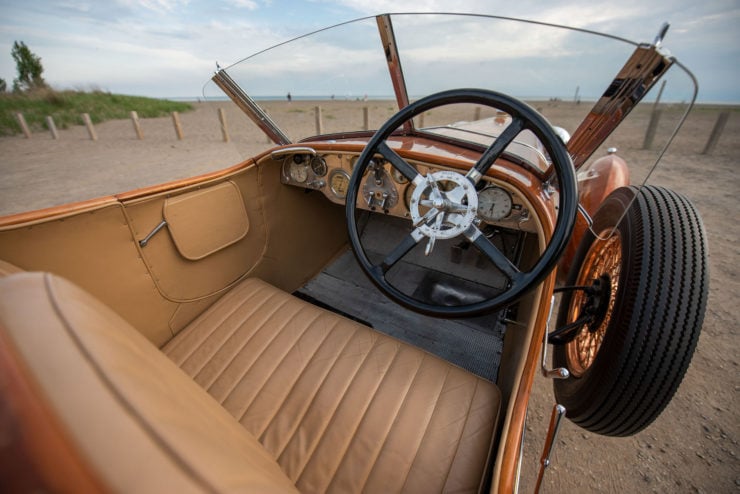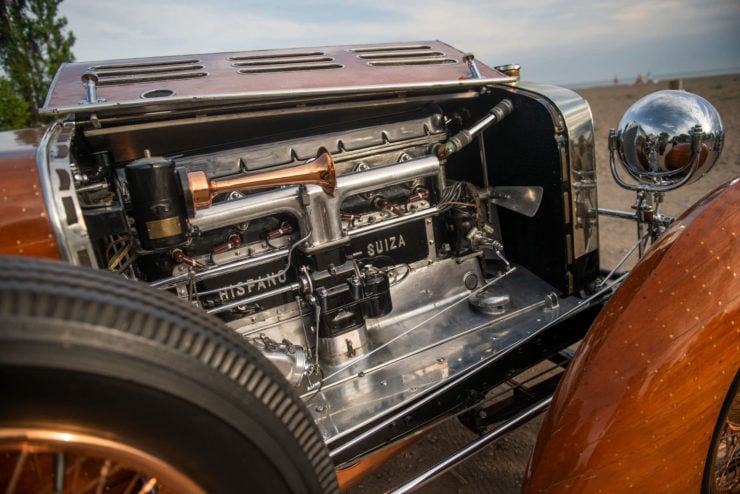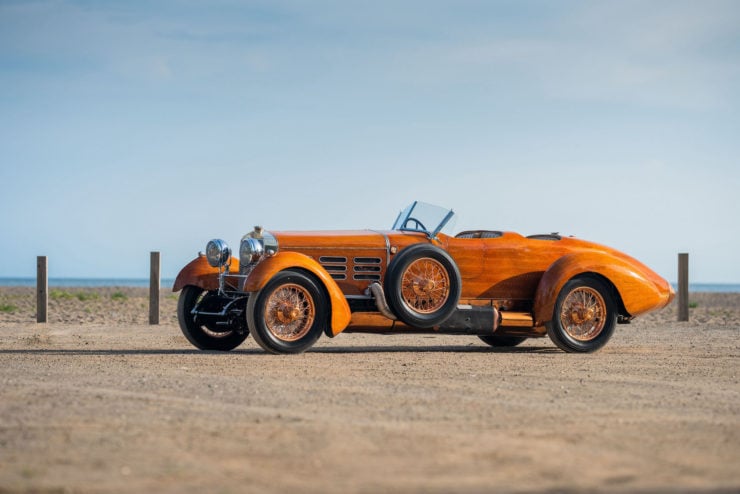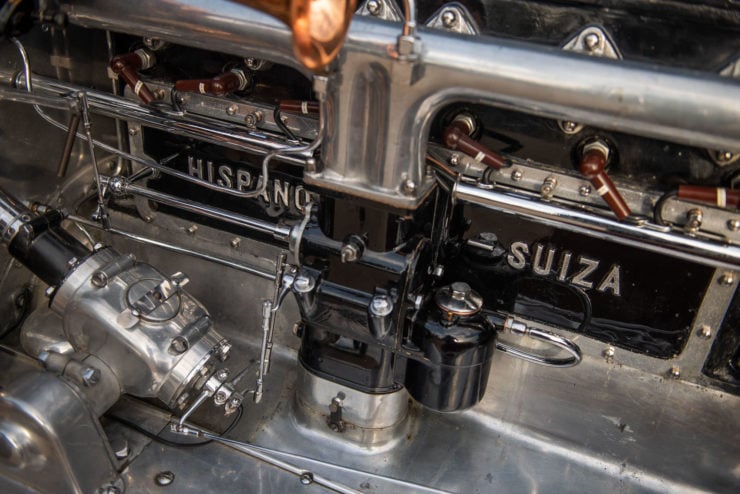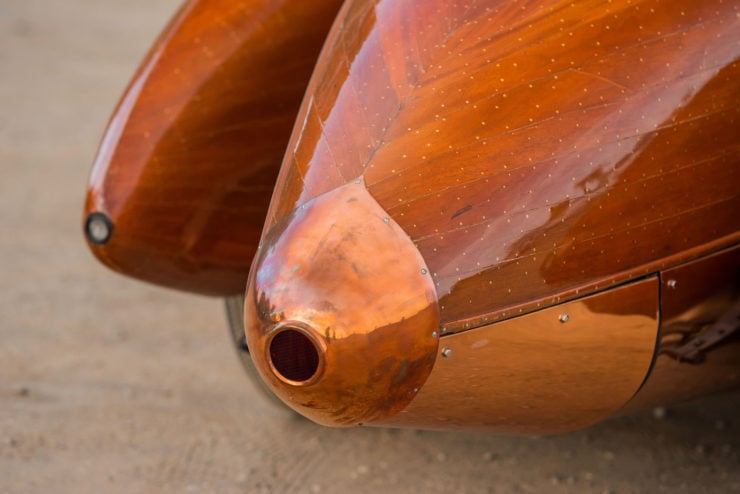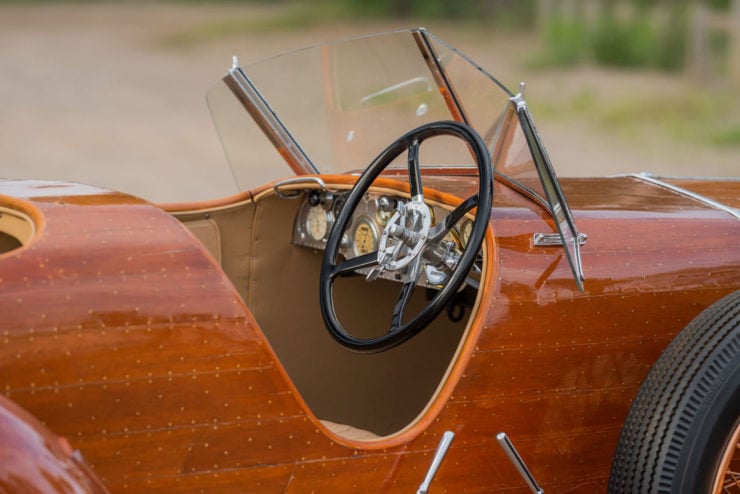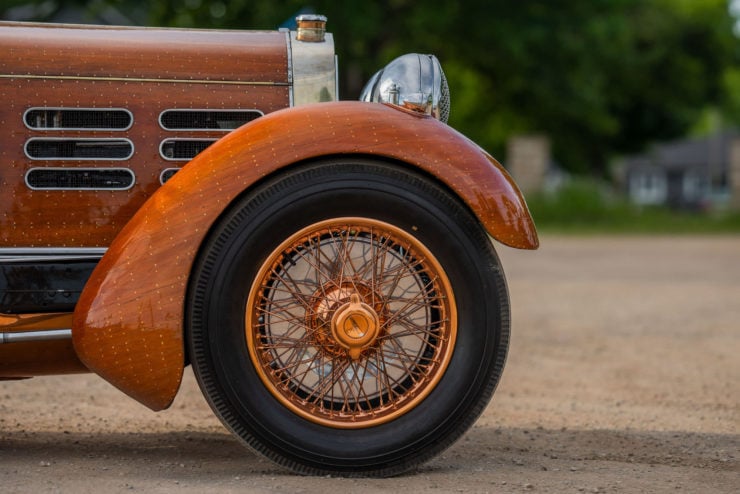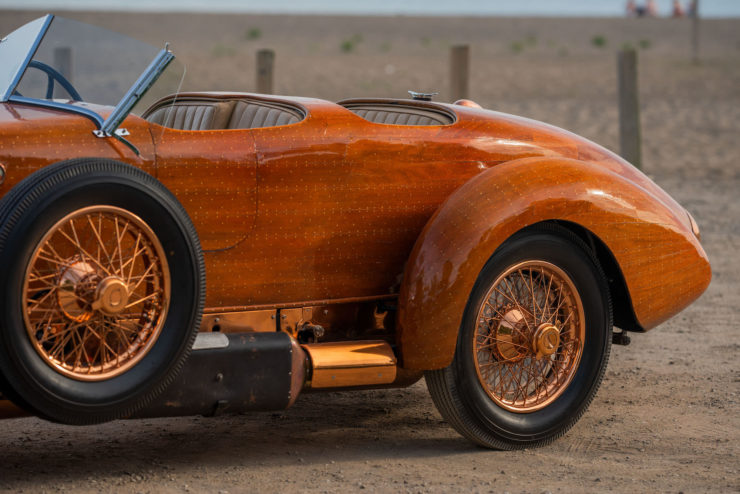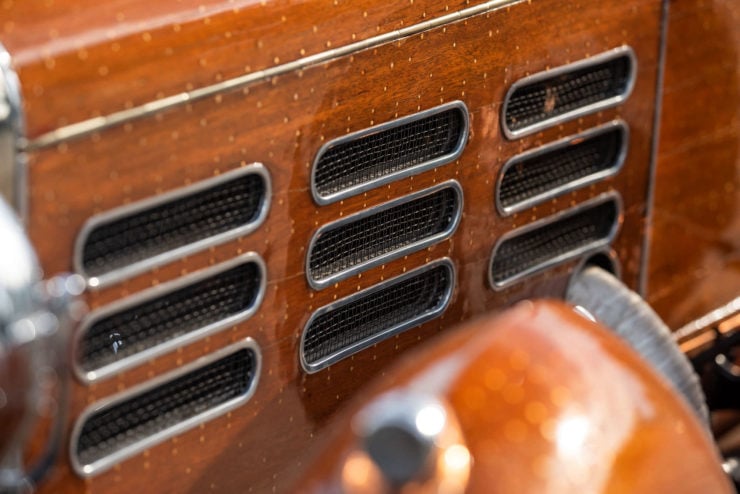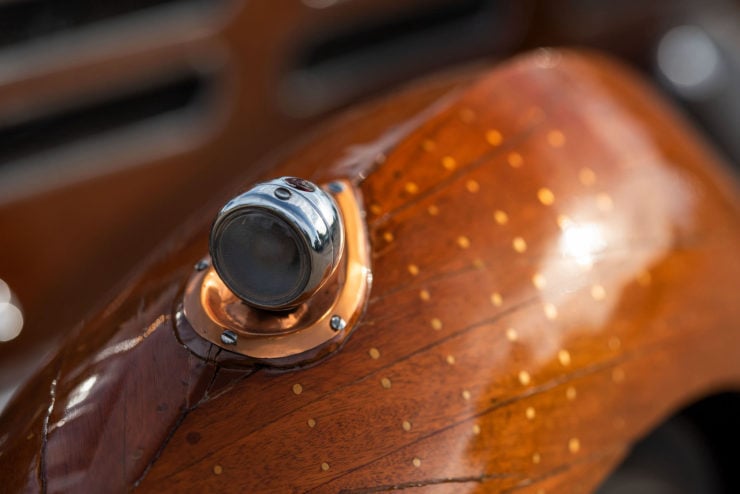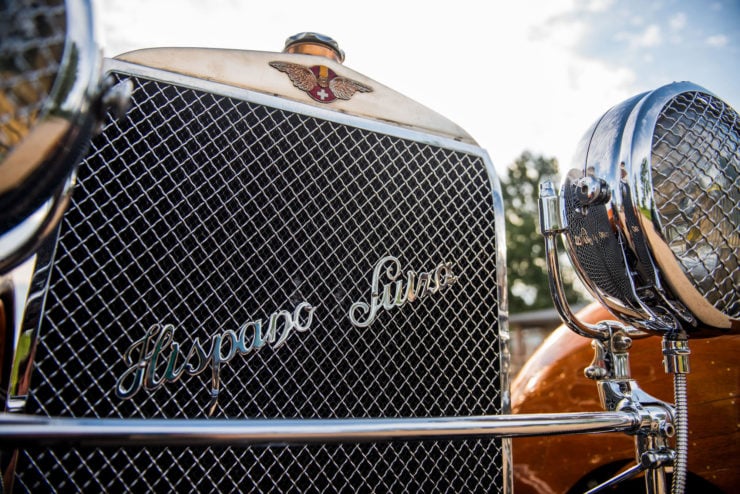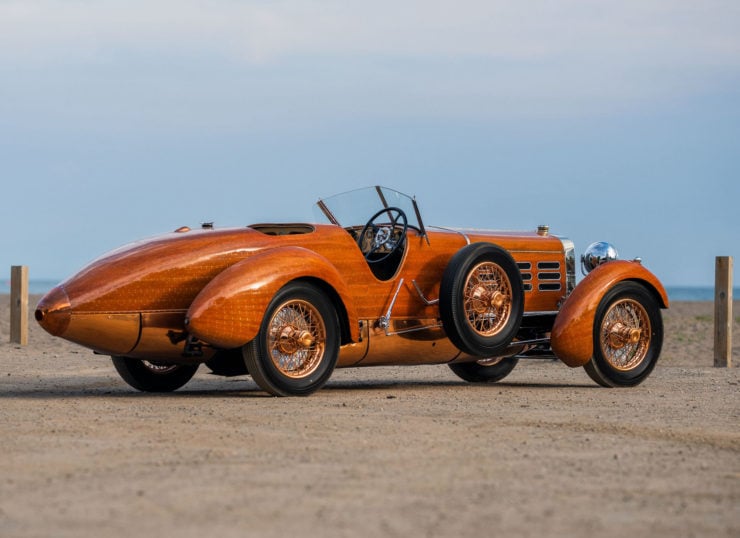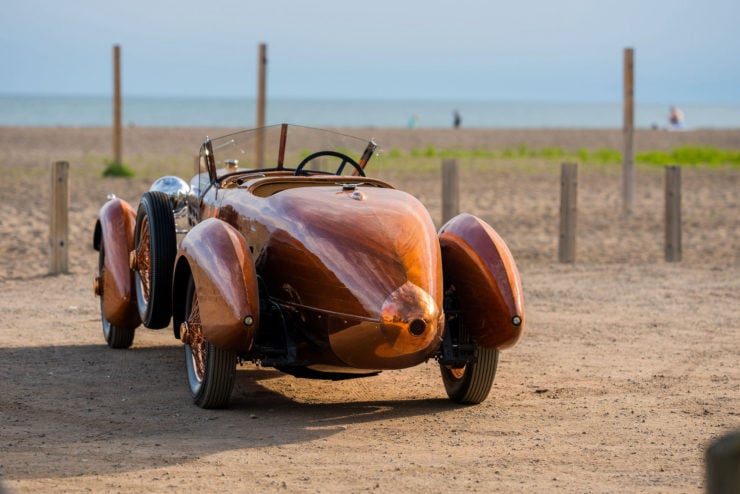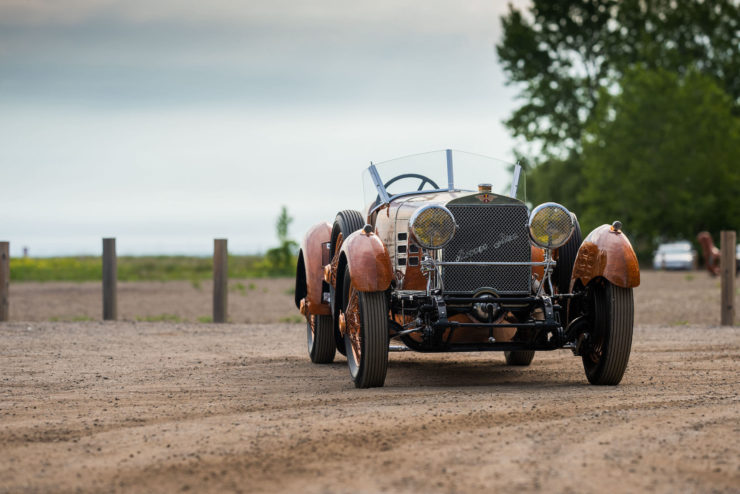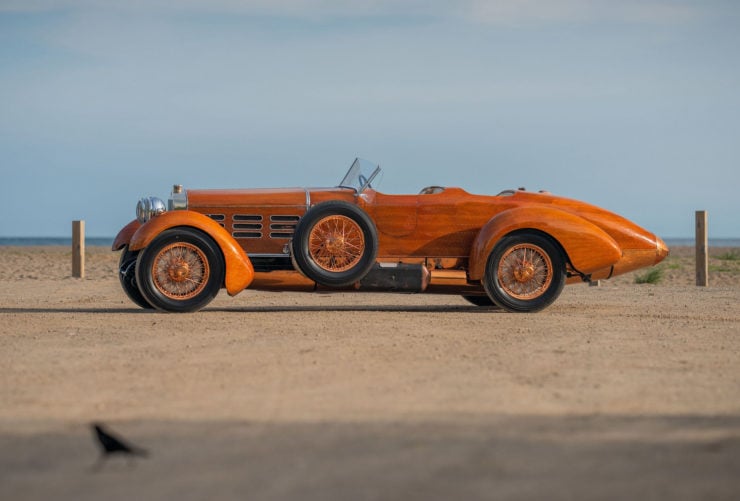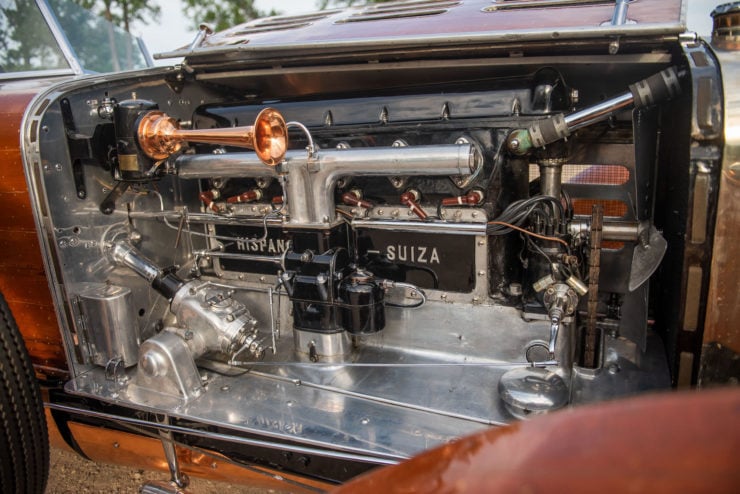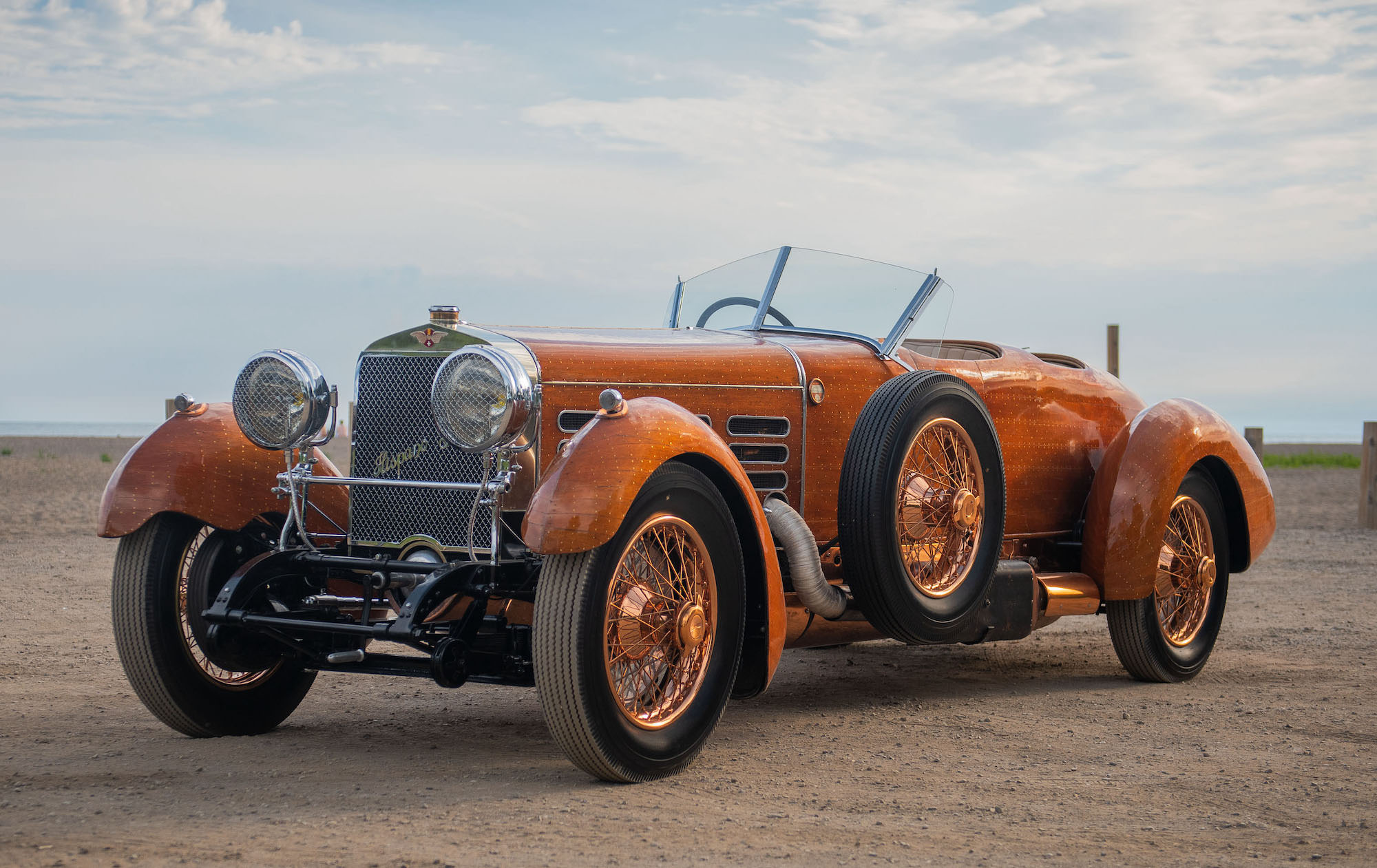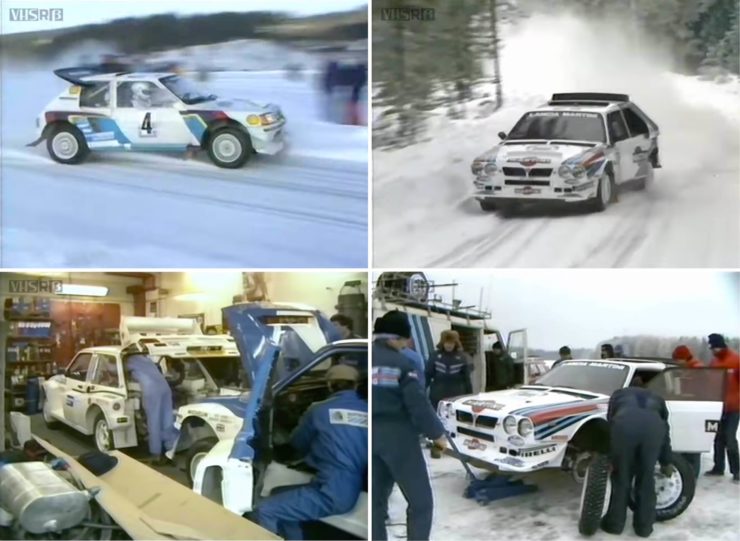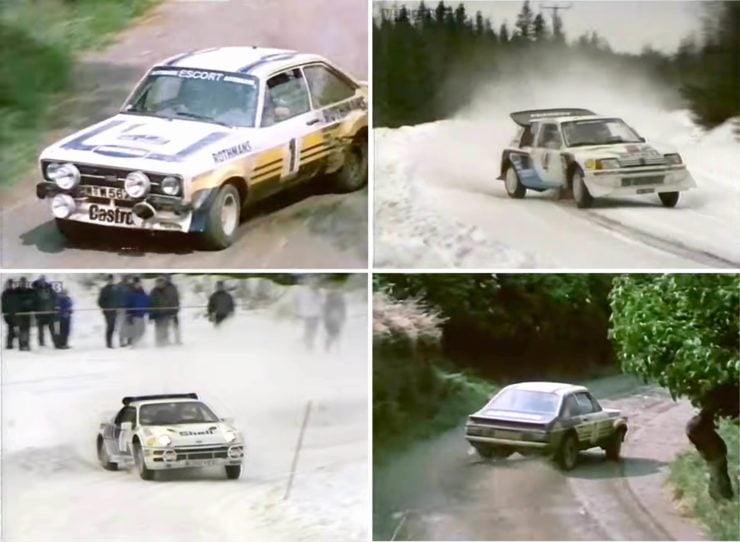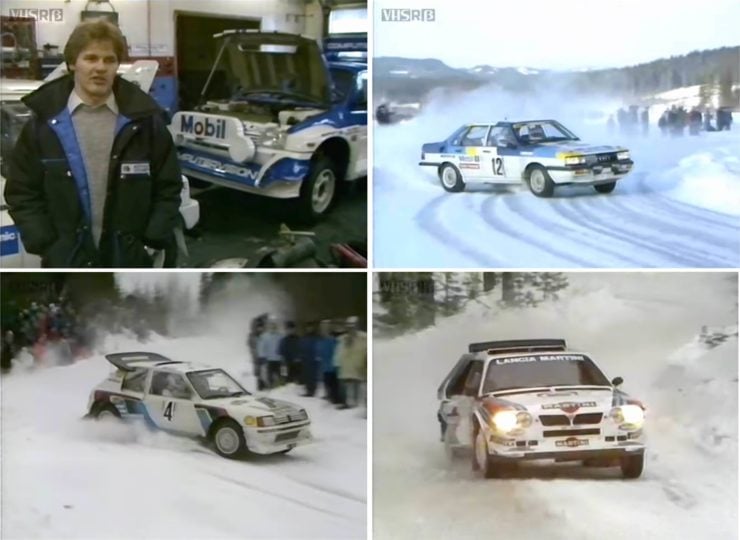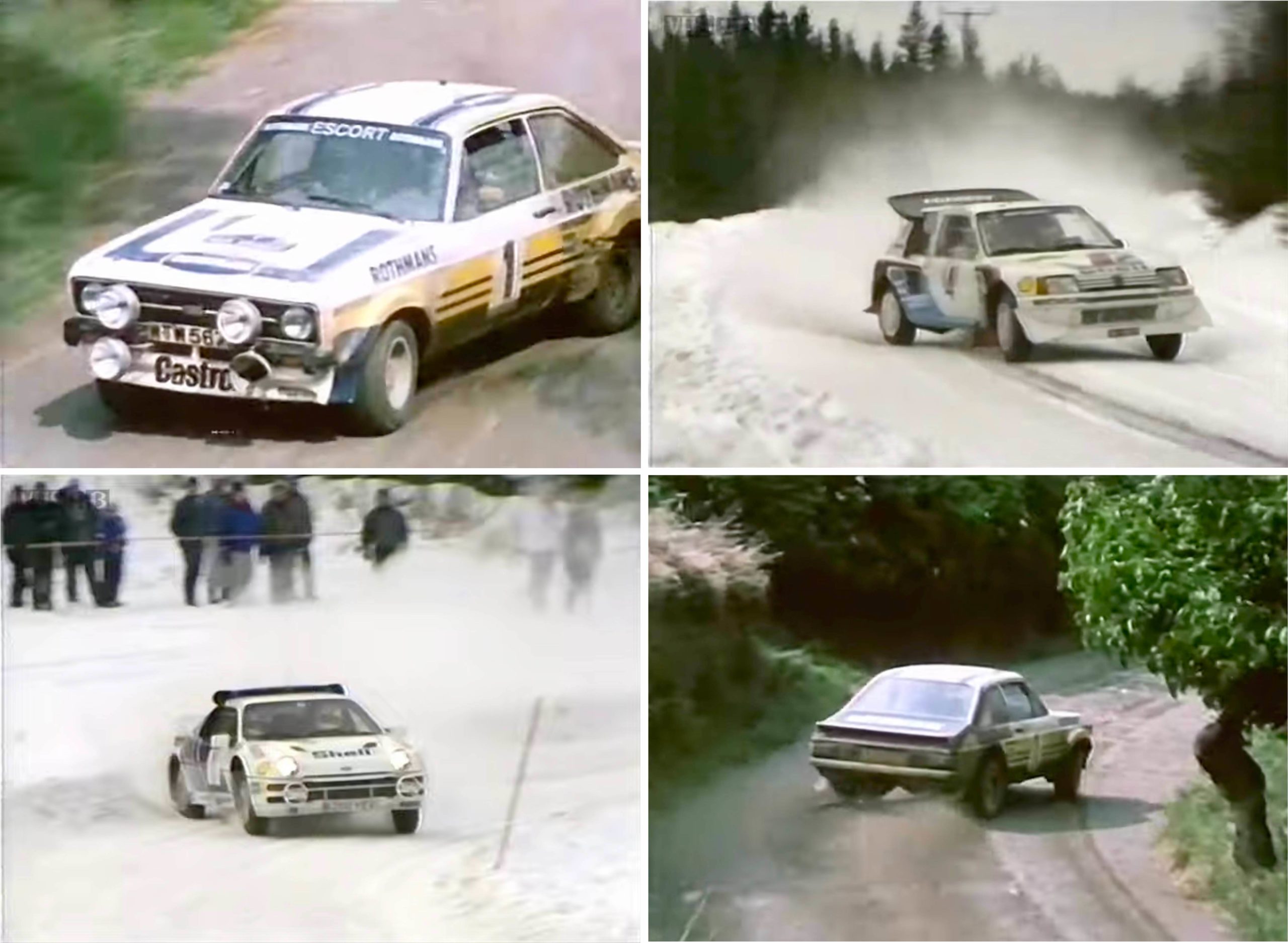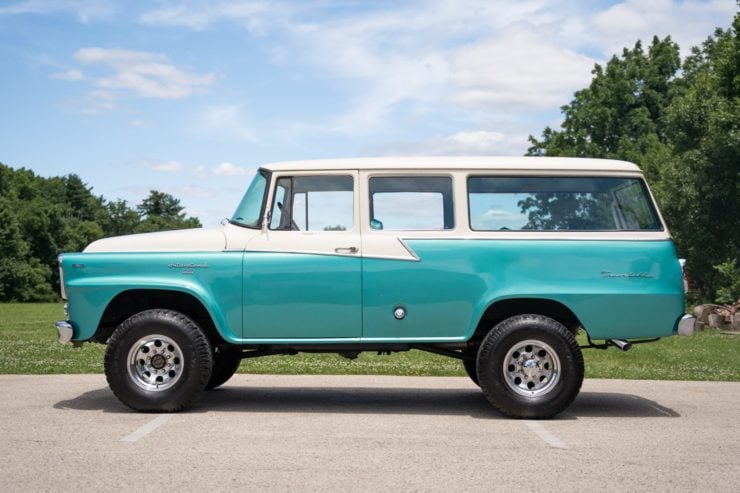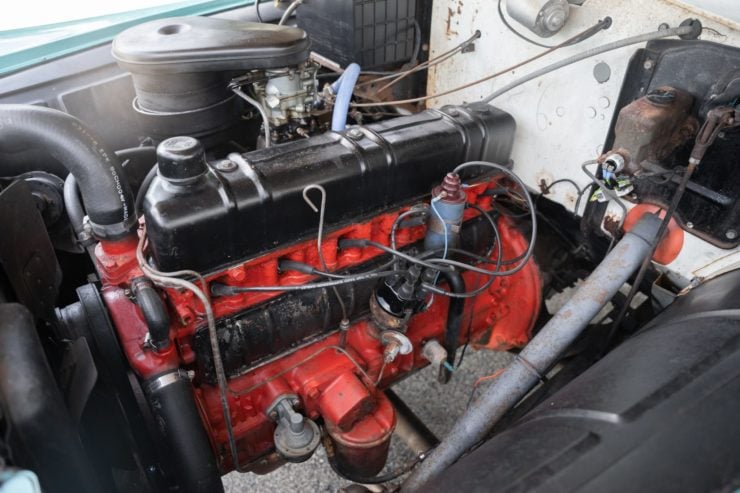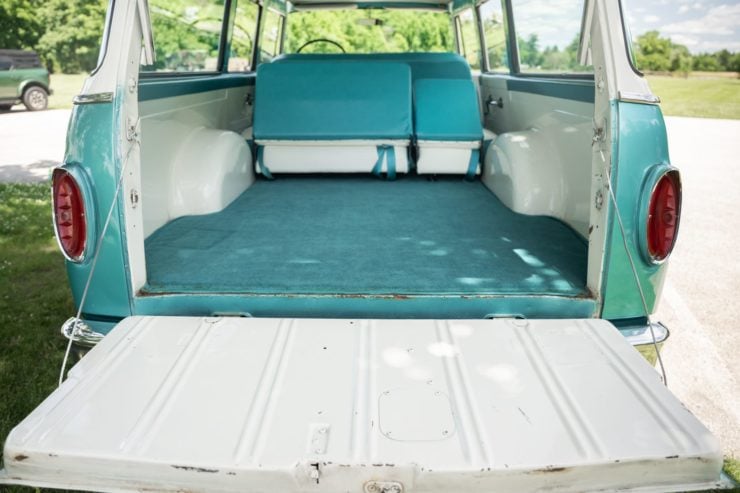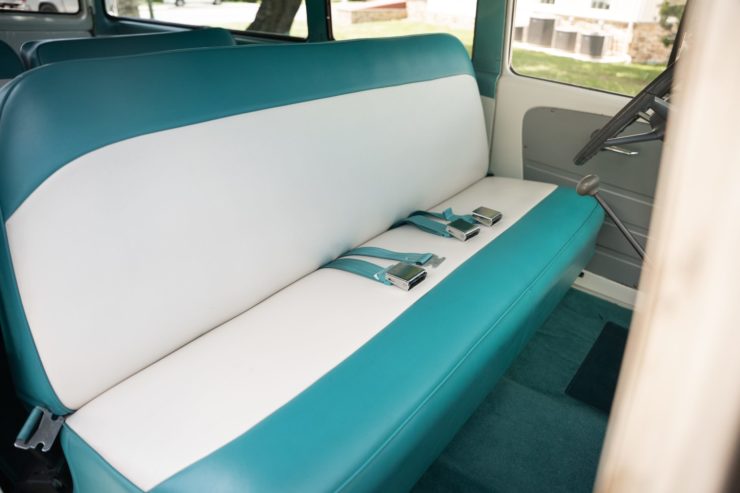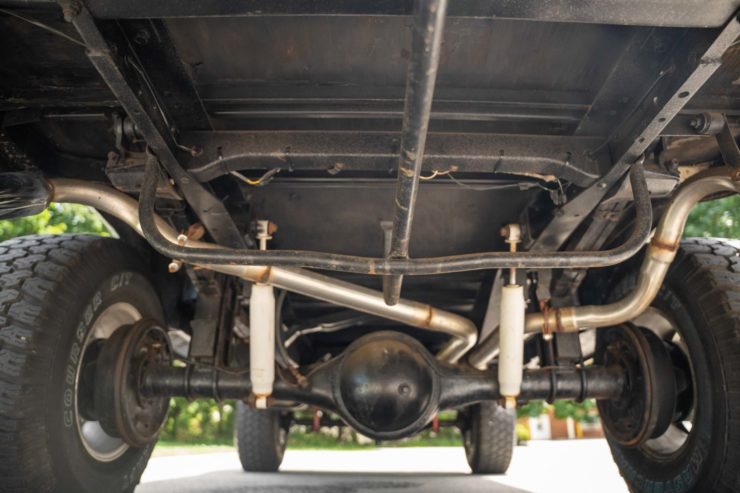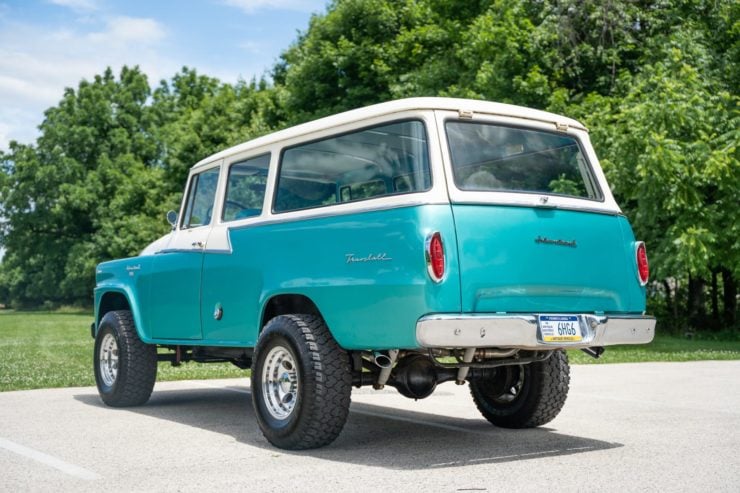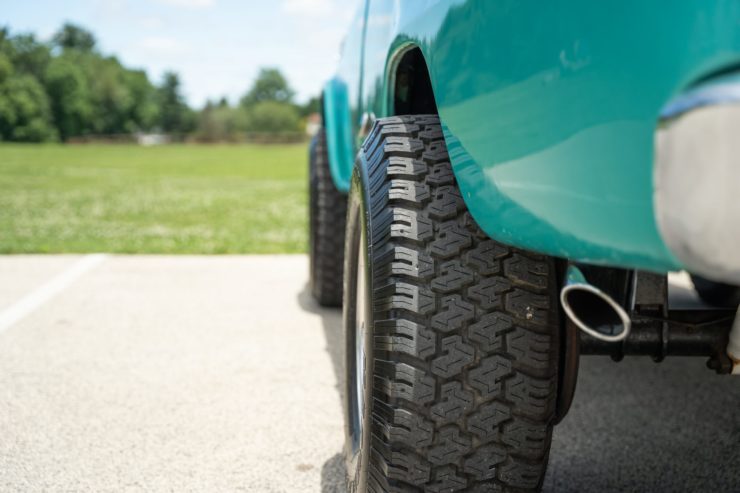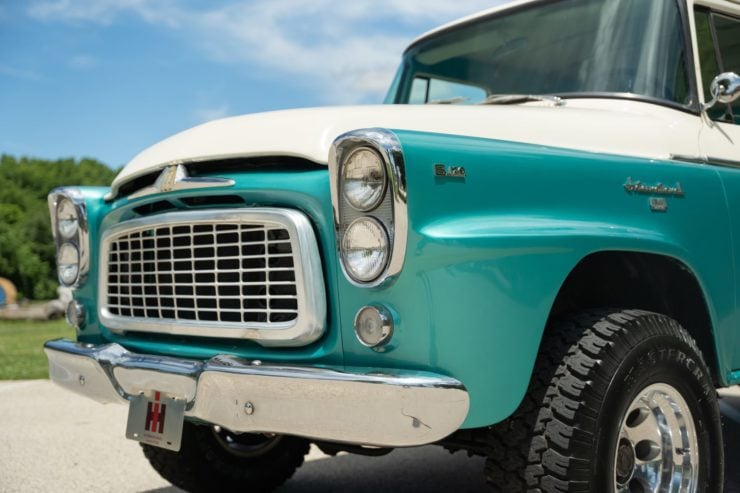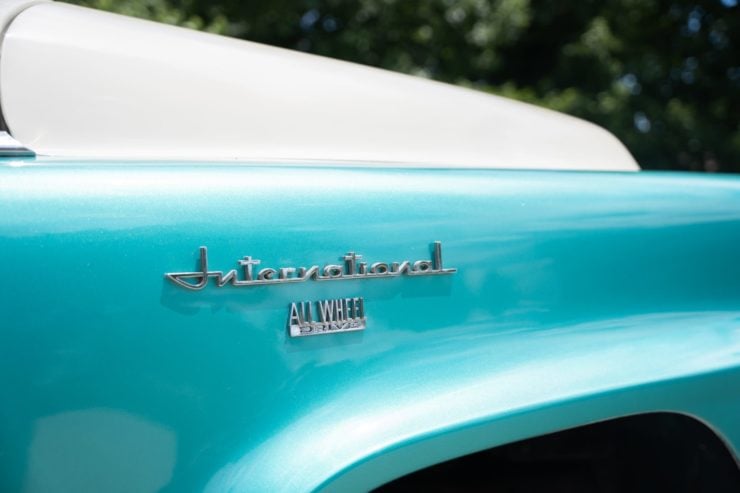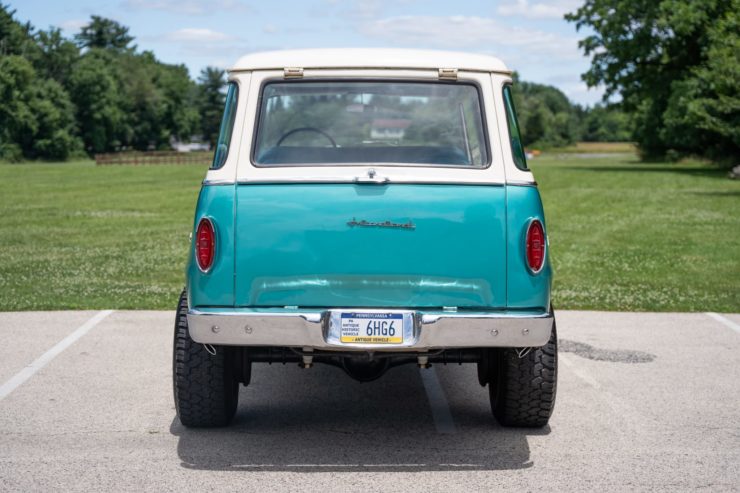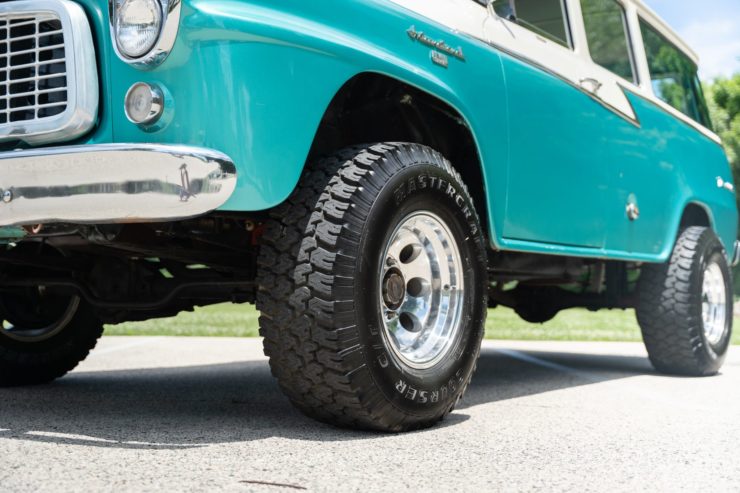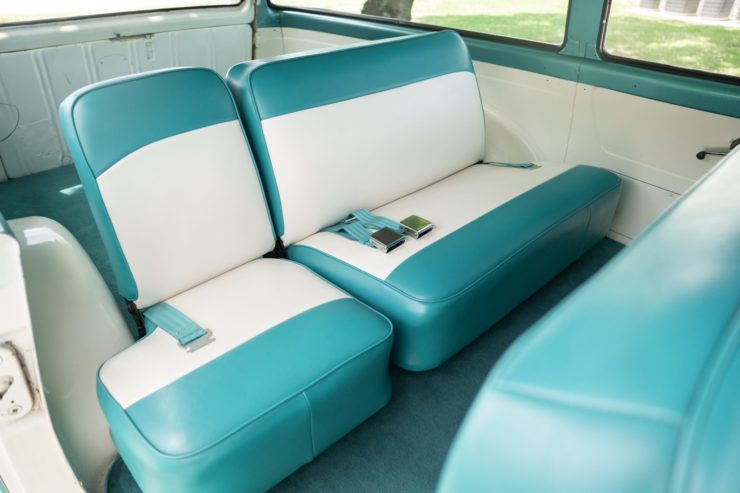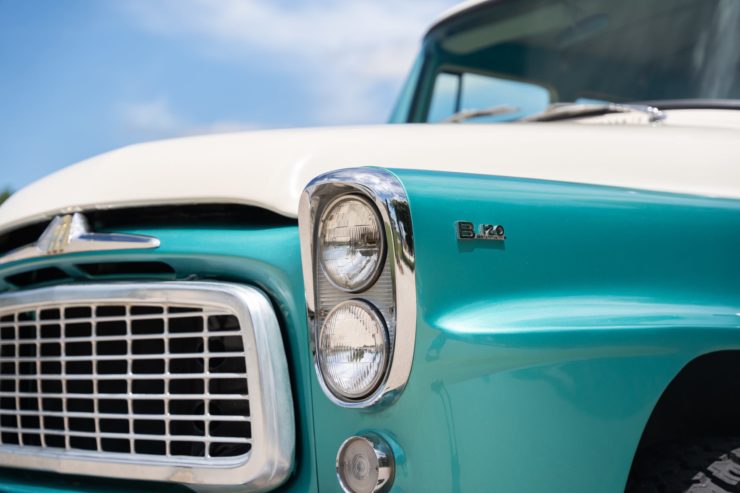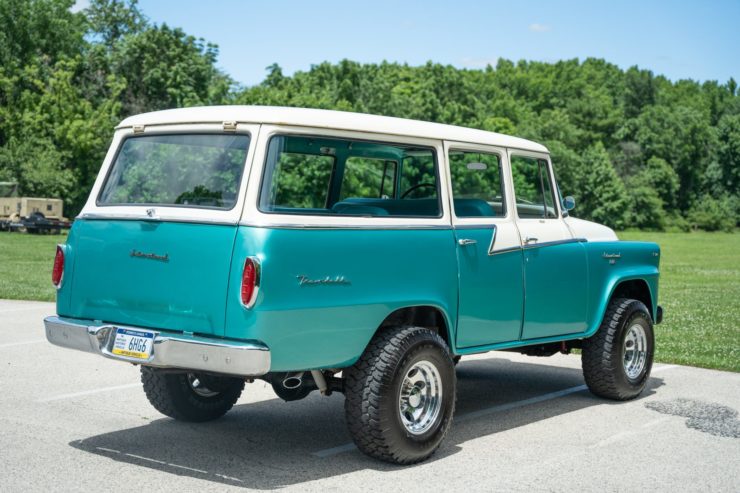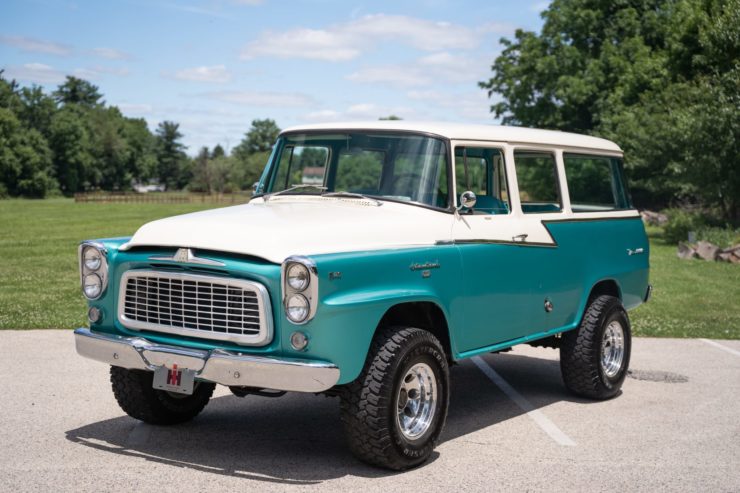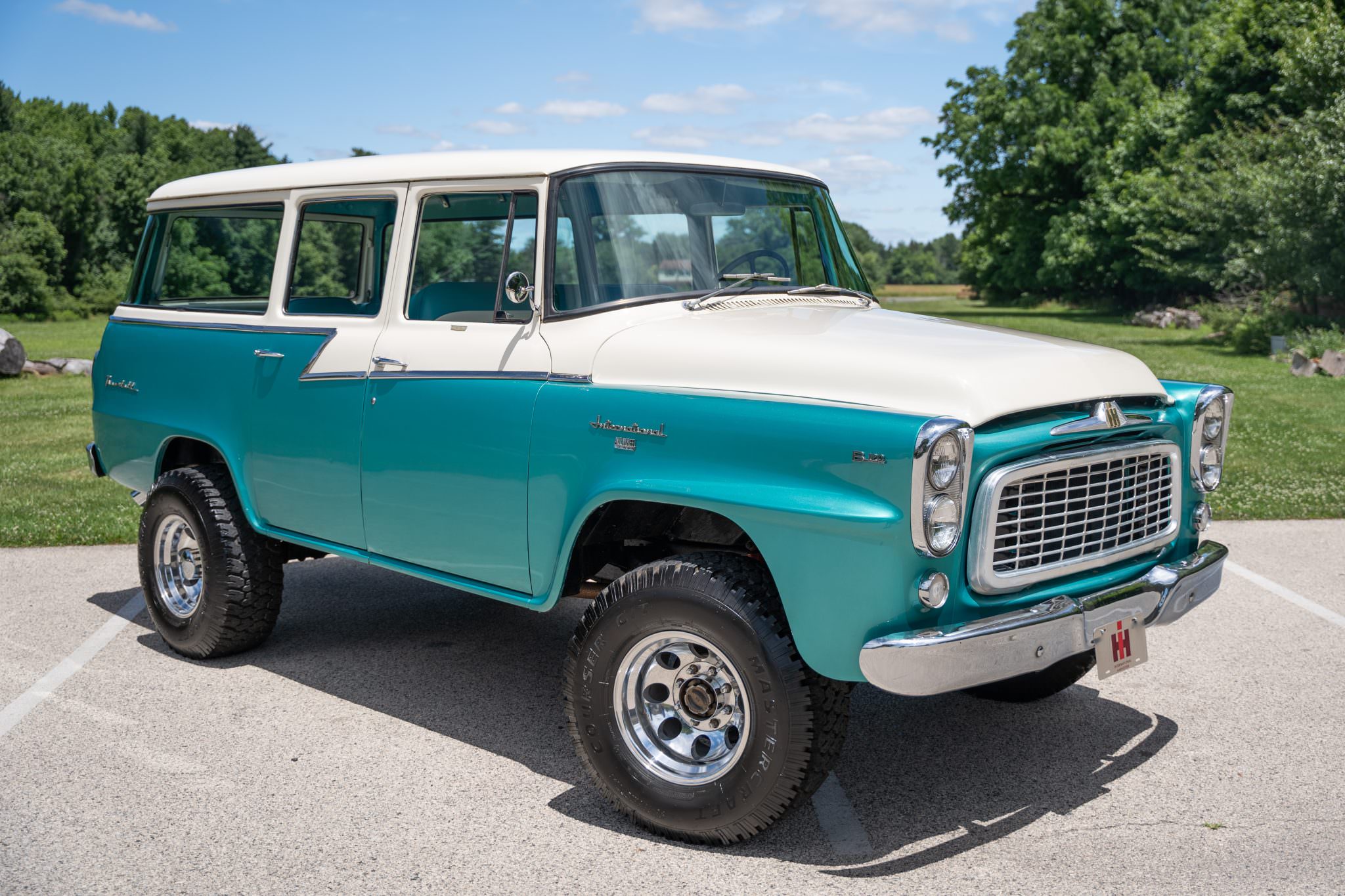Each example of the Ford Escort RS Turbo S1 that was made is a special car, this one is perhaps a little more special than most as it belonged to one of the most beloved figures of the late 20th century – Diana, Princess of Wales.
This Escort was ordered and specified personally for Diana, it was her third Ford Escort, and it has accumulated just 24,961 miles from the time it was delivered to her new to the present day.
Fast Facts – The Ford Escort RS Turbo S1
- The Ford Escort RS Turbo S1 was released in 1985 as the new top of the line Escort model, it featured a slew of upgrades over the standard car including a body kit, uprated suspension, an upgraded interior, and of course, that turbocharged engine.
- The Ford Escort Mark 3 had been released in 1980 as an all-new car for an all-new decade. The earlier Mark 1 and Mark 2 Escorts were among the most popular cars ever made by Ford in Europe, so the Mark 3 had its work cut out for it.
- Princess Diana, later known as Lady Diana, was a big fan of Ford Escorts. She owned three over the course of her life and she typically much preferred driving herself around rather than being chauffeured in the Royal Family’s fleet of opulent Bentleys and Rolls-Royces.
- Given the security risks she faced, Diana ordered this car specially from Ford. It would be the only RS Turbo S1 to leave the factory painted black, and when driving it around town she would be accompanied by a detective in the passenger seat, a member of The Royalty Protection Command (SO14).
The Ford Escort Mark 3
There are few (if any) British cars of the 1980s that could match the wild success of the third generation Ford Escort. It was released in 1980 and by 1982 it was the best-selling car in the UK, it was voted European Car of the Year in 1981, and by 1989 it was the most common car on British roads, with almost 1.5 million examples registered.
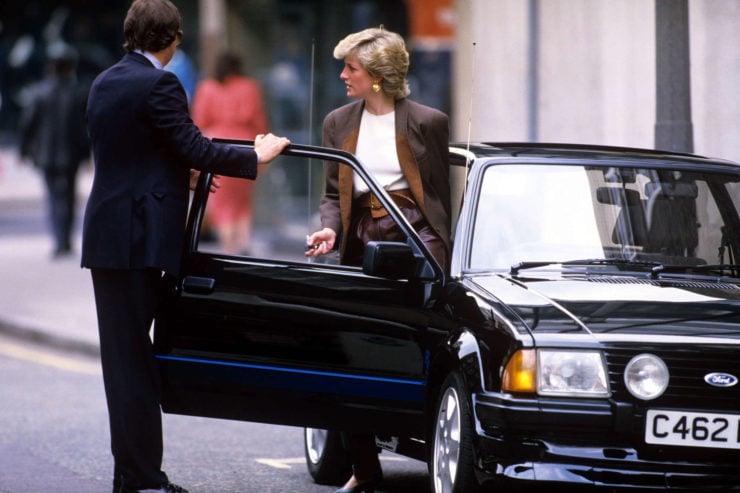
Princess Diana was regularly seen and photographed in her jet black Escort RS Turbo out and about in London.
The project to develop the Mark 3 Escort began in the late 1970s, it was a plan fraught with danger for Ford as the earlier Mark 1 and Mark 2 Escorts had become wildly successful both in sales figures and motorsport successes.
It was clear that the live axle on leaf spring suspension used in the rear end of both the Mark 1 and Mark 2 Escort needed to go. The steel unibody shell also needed to be completely redesigned to meet ever more stringent crash safety legislation.
The solution was to build an entirely new car from a blank slate. Ford’s European engineers developed a steel unibody shell that was both stiffer and stronger than the outgoing model and perhaps controversially, they opted for a front-wheel drive layout rather than the rear-wheel drive system used on the earlier Escorts.
The decision to go with front-wheel drive was almost certainly influenced by best-selling cars in the Escort’s market segment, vehicles like the Volkswagen Golf GTI and the Honda Civic.
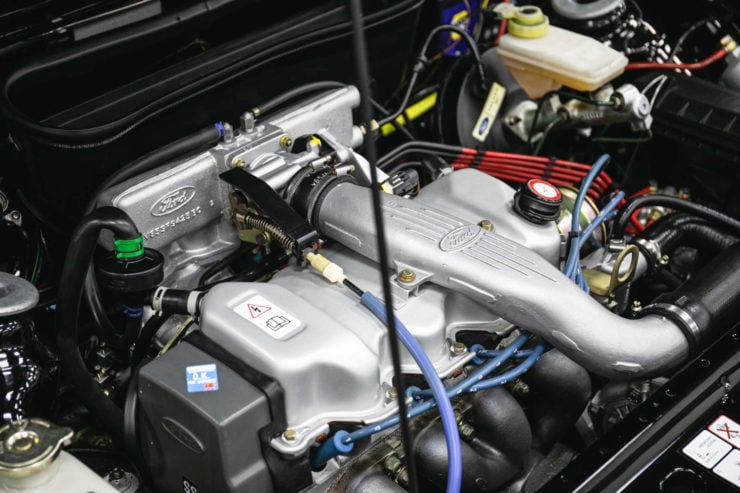
With 132 bhp at 6,000 rpm and 133 lb ft or torque at 3,000 rpm the Ford Escort RS Turbo S1 was capable of 128 mph with a 0 to 62 mph time of 7.8 seconds.
Ultimately the Mark 3 would go on to become a resounding success for Ford, it never quite achieved the legendary status of the earlier Mark 1 and Mark 2 cars but this largely down to the Mark 3’s lack of major motorsport successes.
The Ford Escort RS Turbo S1
In 1985 the Ford Escort RS Turbo was released, it was to be the fastest road-legal Mark 3 Escort ever made and for many it was the car they had been crying out for since the new model family had been released five years earlier in 1980.
The Bosch KE Jetronic fuel-injected 1.6 liter engine benefitted from turbocharging which lifted power to 132 bhp at 6,000 rpm and 133 lb ft or torque at 3,000 rpm. This engine also had a new aluminium alloy head with a high-performance cam and sodium-filled exhaust valves to better handle the additional heat.
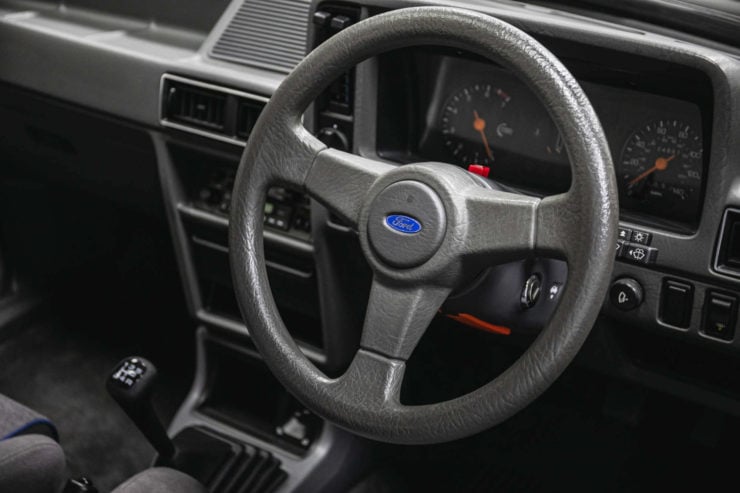
The no-frills interior of the Escort must have been quite a contrast from the opulence of the Royal Family’s many Bentleys and Rolls-Royces.
The RS Turbo was given a bodykit, some of which was new and some of which had been sourced from the earlier XR3i, and alloy wheels were borrowed from the RS1600i.
The Mark 3 Escort had independent front and rear suspension, consisting of MacPherson struts up front with transverse arms, longitudinal tie bars, and coil springs in the rear. The Turbo RS was fitted with anti-roll bars front and back with Koni adjustable dampers at all four corners.
A total of 8,604 were built despite the fact that just 5,000 needed to be sold for homologation purposes, and they remain among the most popular European Fords of the era.
Princess Diana’s 1985 Ford Escort RS Turbo
The car you see here is arguably the most special of all the S1 Escort RS Turbos that were built. It’s the only one that ever left the factory painted black – almost all the others were painted white with very few exceptions.
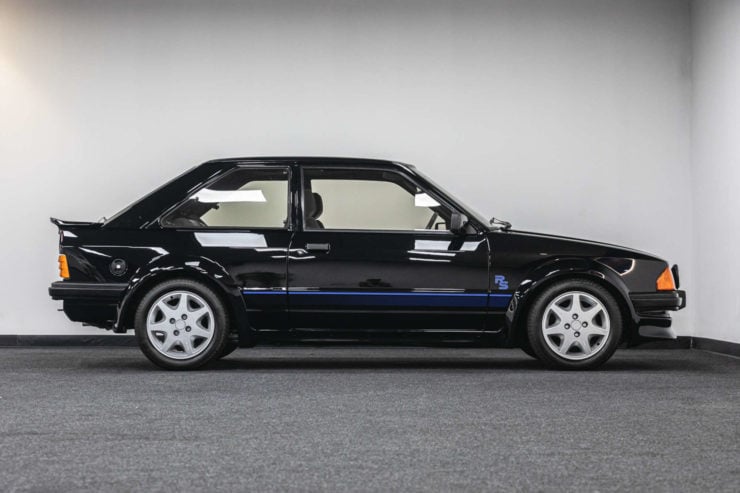
In the mid-1980s Princess Diana had a Ford Escort 1.6i Cabriolet that was bright red. It wasn’t a car that offered much in the way of security due to the fabric top, it had little in the way of speed, and it wasn’t discreet at all.
After listening to the safety concerns that had doubtless been laid before her she opted for a new car, and it would be the fastest production Escort in the world at the time – the Escort RS Turbo.
The Special Vehicle Engineering department painted the car in a stealthy all-black finish, it was also given a second rear view mirror for the protection officer to monitor traffic behind, and it had a radio in the glove box (the cable for which is still visible today.)
Princess Diana used the car extensively and was often photographed out and about in it, as well as arriving east various favorite stores and restaurants in Chelsea and Kensington, sometimes with a young Prince William in the backseat.
The car is now due to cross the auction block with Silverstone Auctions on the 27th of August with no reserve and no price guide. If you’d like to read more about its fascinating history you can visit the listing here.
Editor’s Note: Princess Diana was later known as Lady Diana, however at the time she bought and owned this car she carried the earlier title and so we’ve used it here in this article. If you happen to be well-versed in the use of royal titles and believe we’ve made a mistake, please let us know via our contact page.
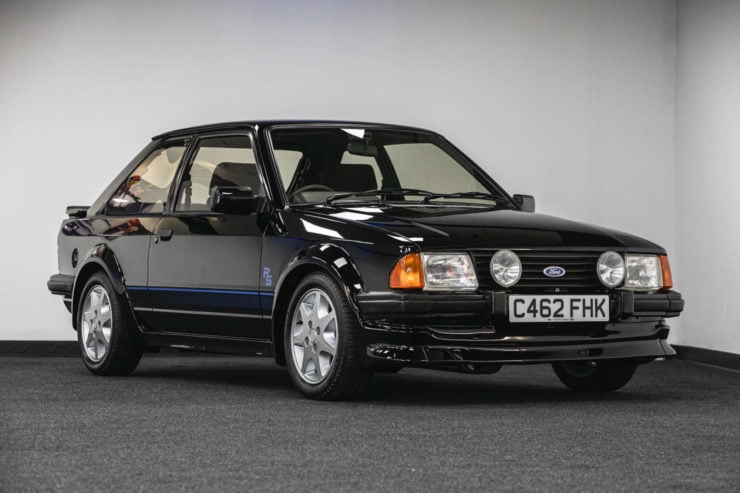
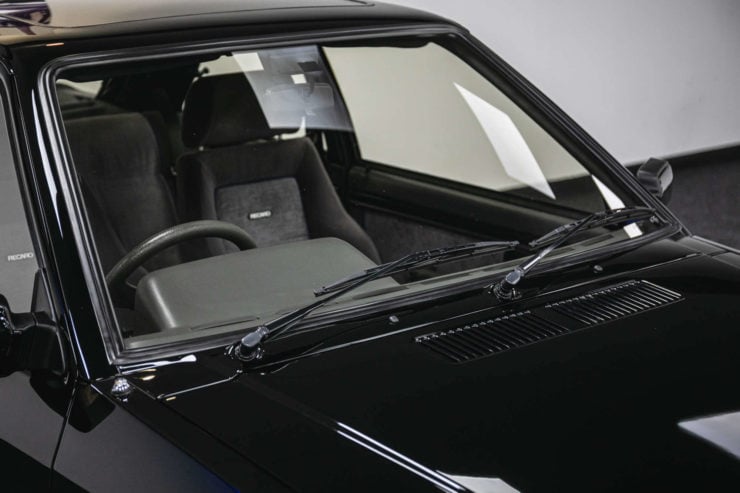
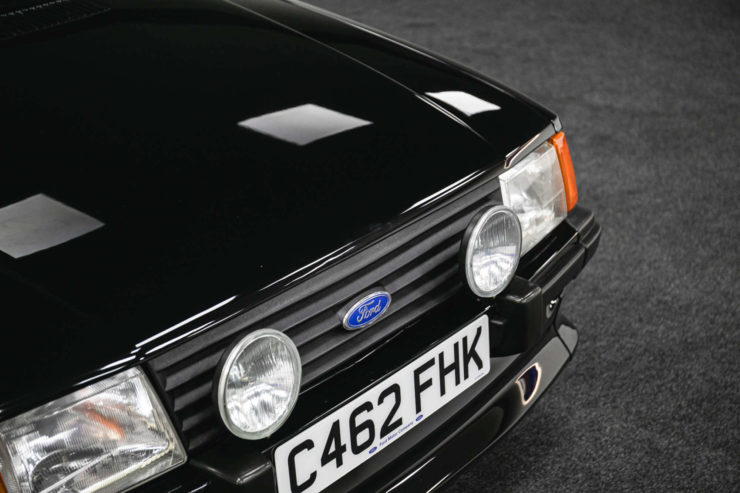
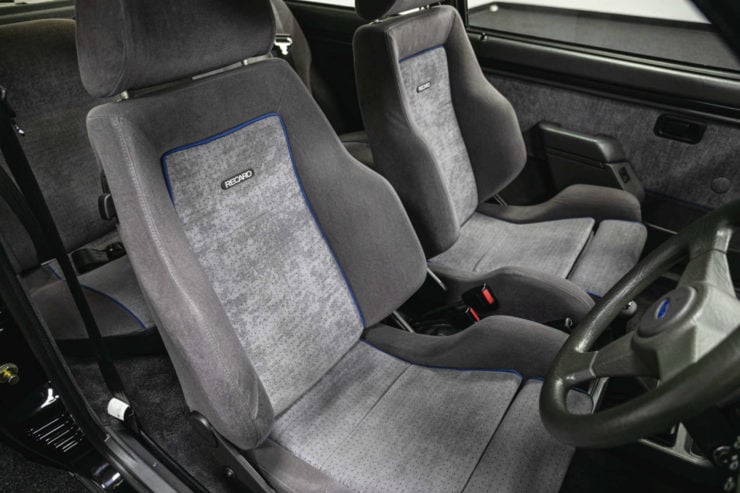
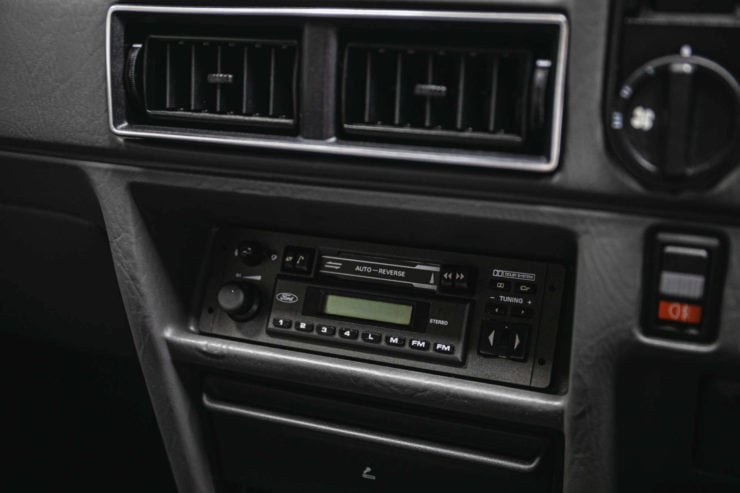
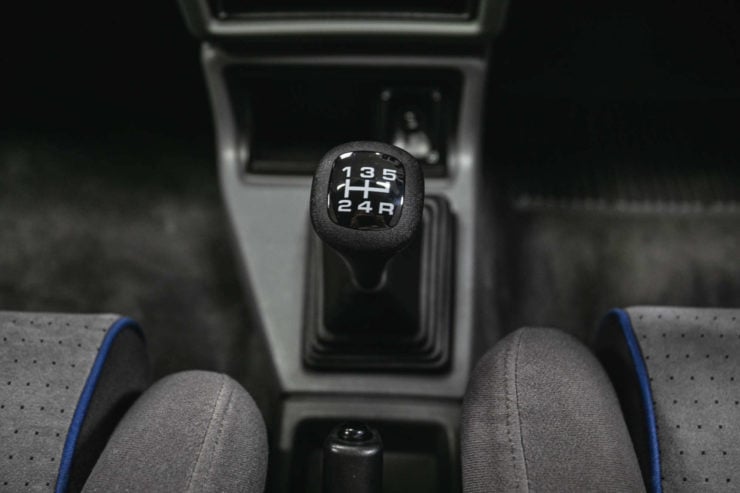
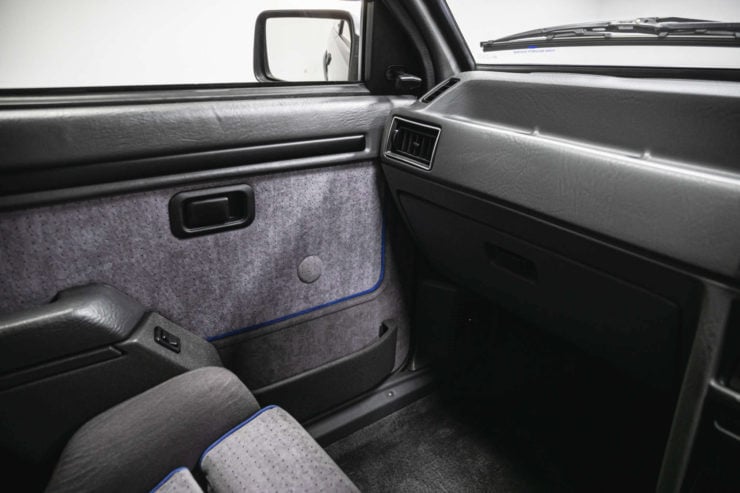
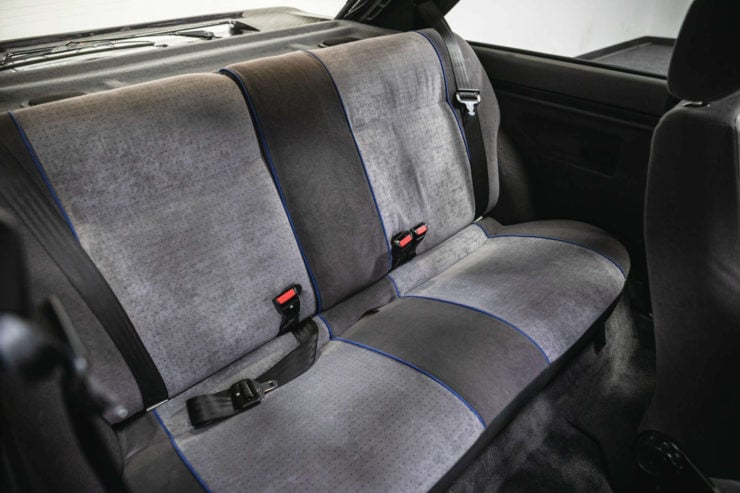
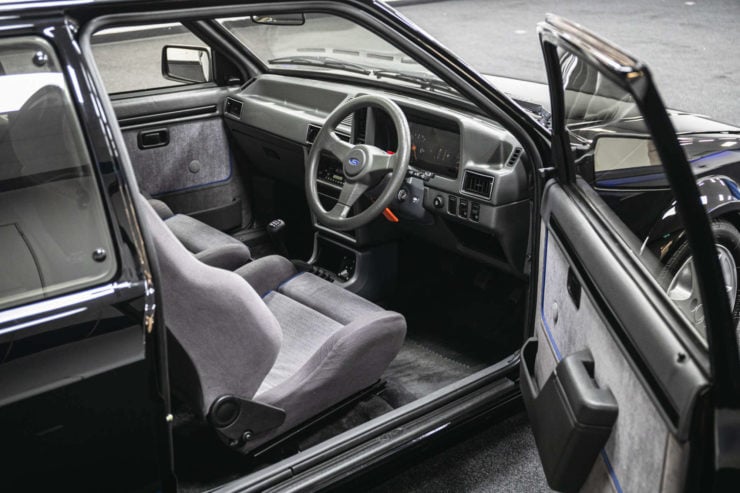
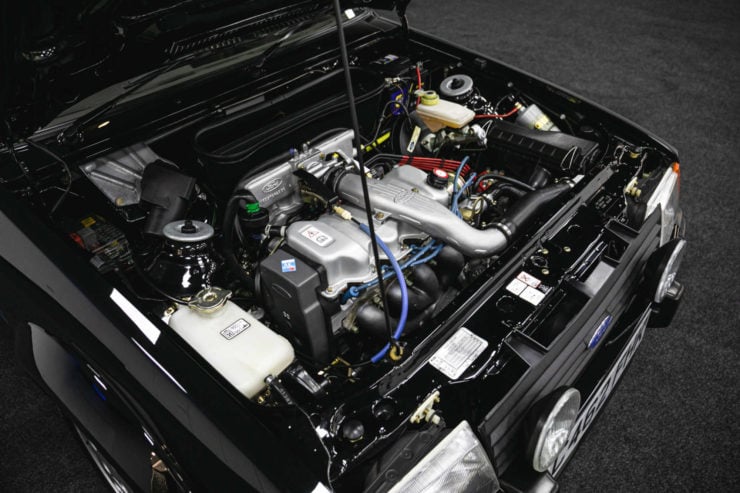
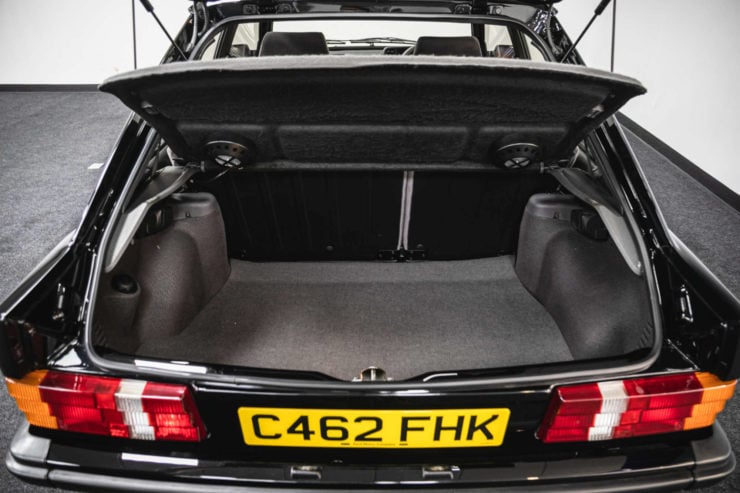
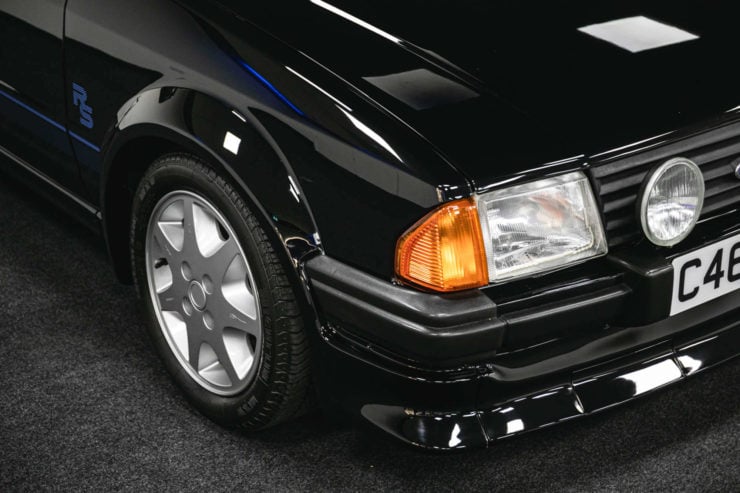
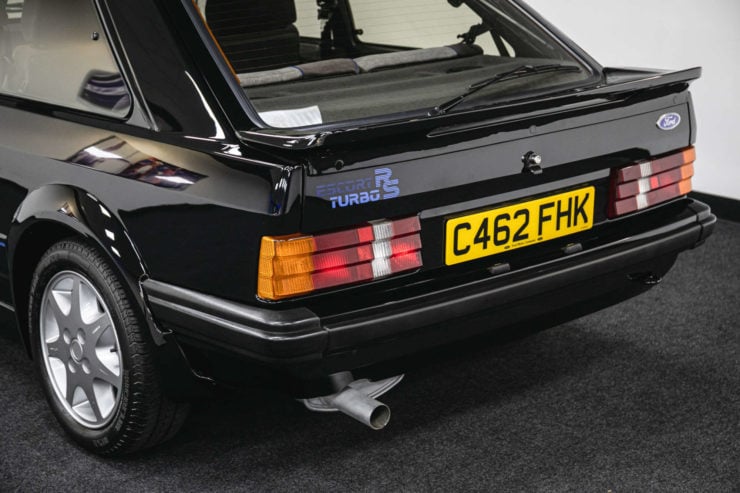
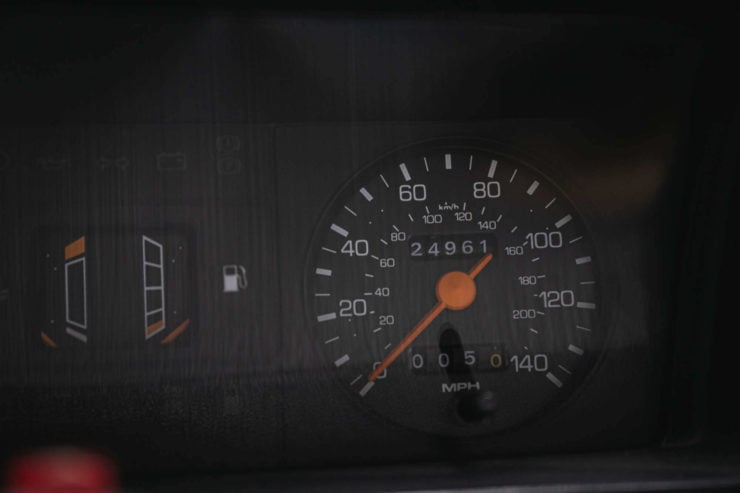
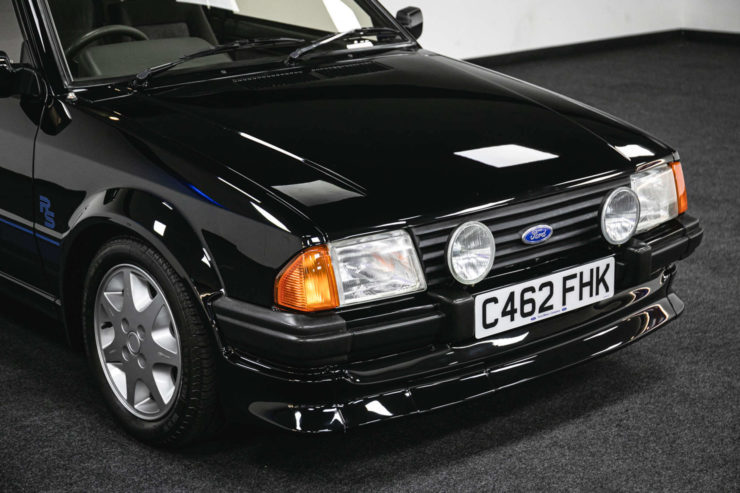
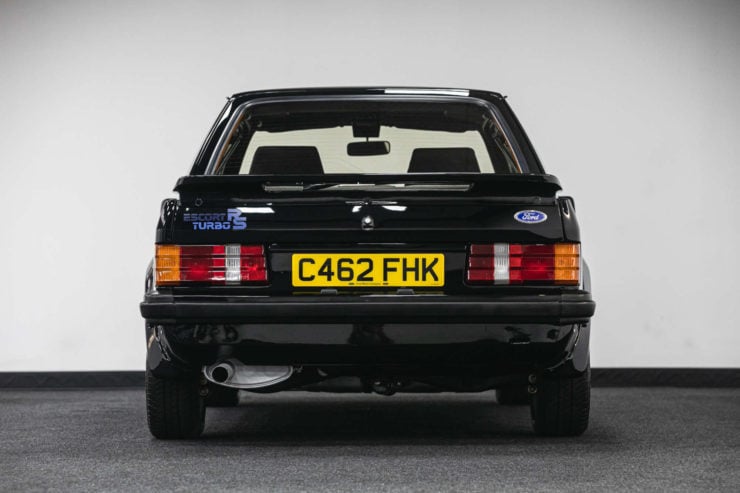
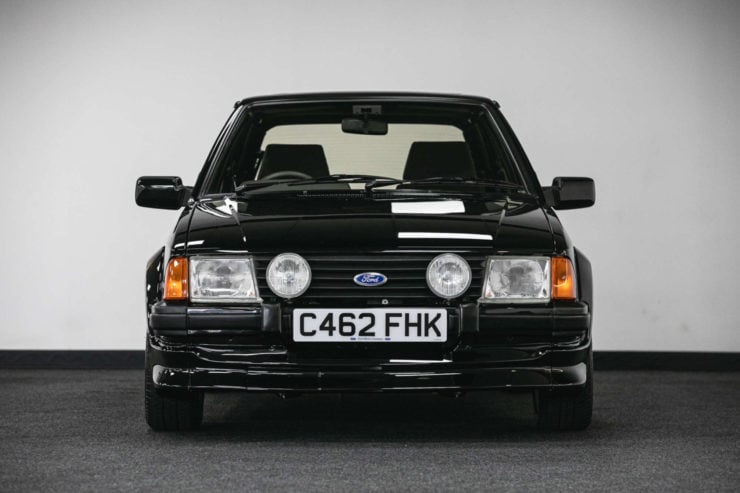
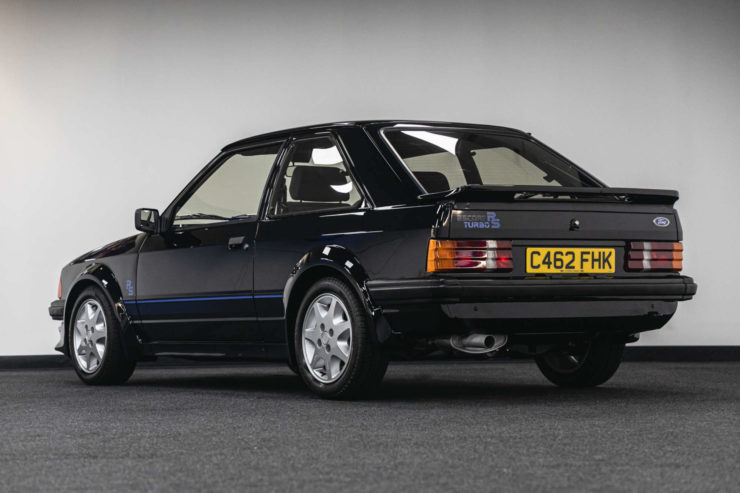
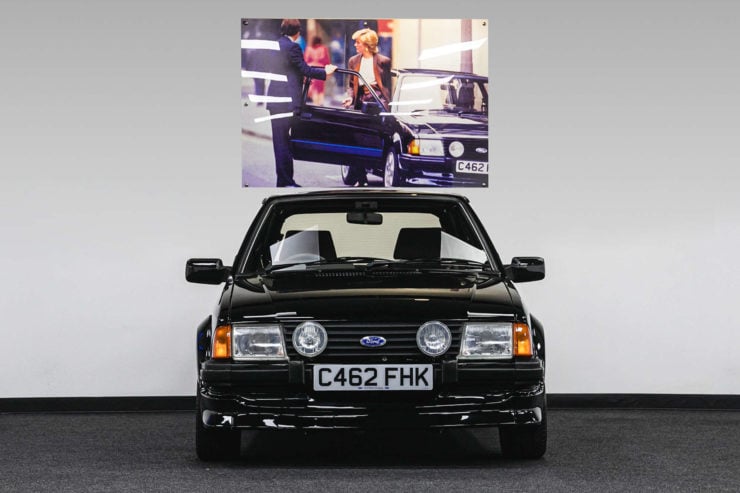
Images courtesy of Silverstone Auctions
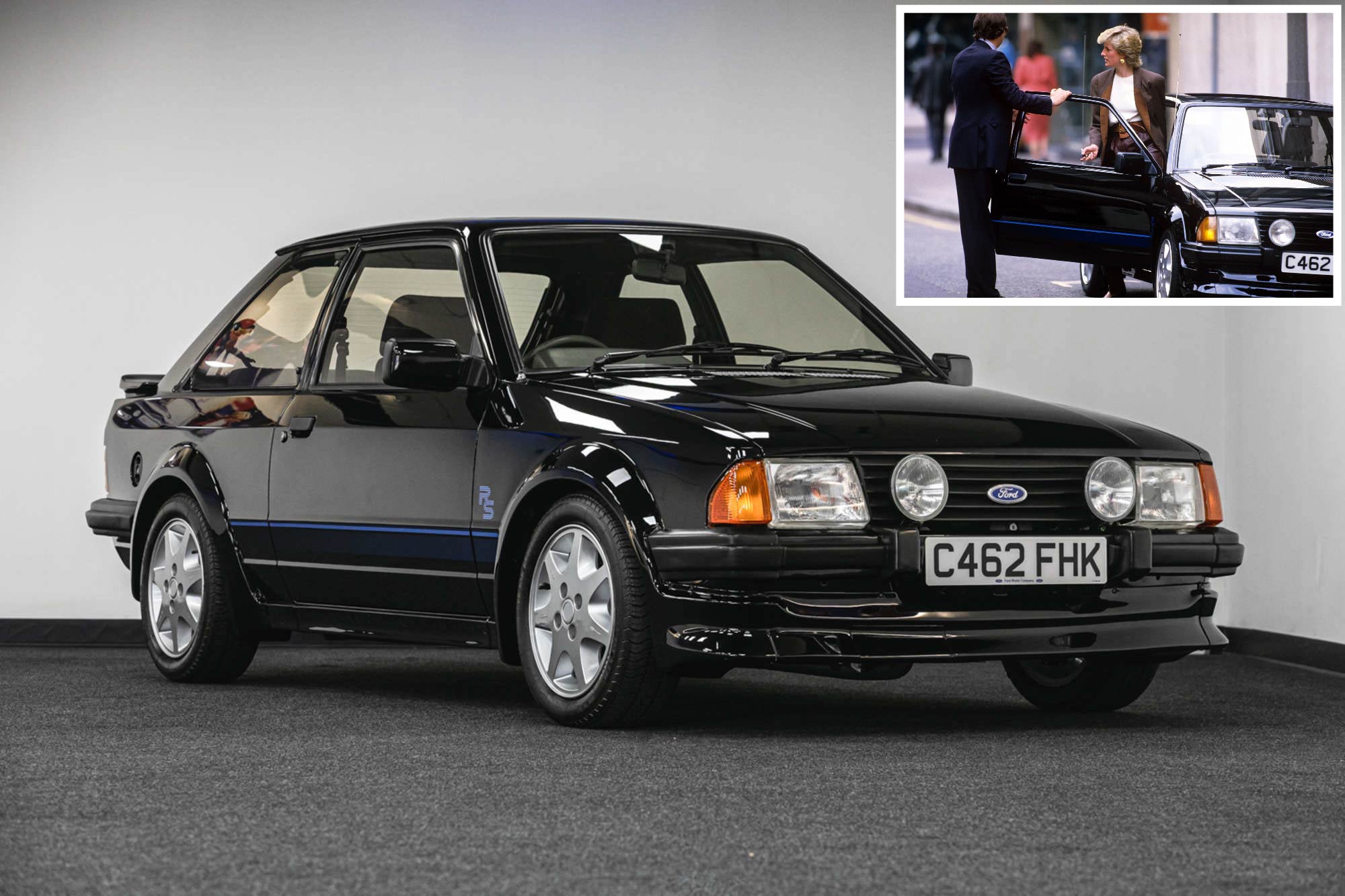
The post For Sale: Princess Diana’s 1985 Ford Escort RS Turbo S1 appeared first on Silodrome.
from Silodrome https://silodrome.com/princess-diana-ford-escort-rs-turbo/
via gqrds
